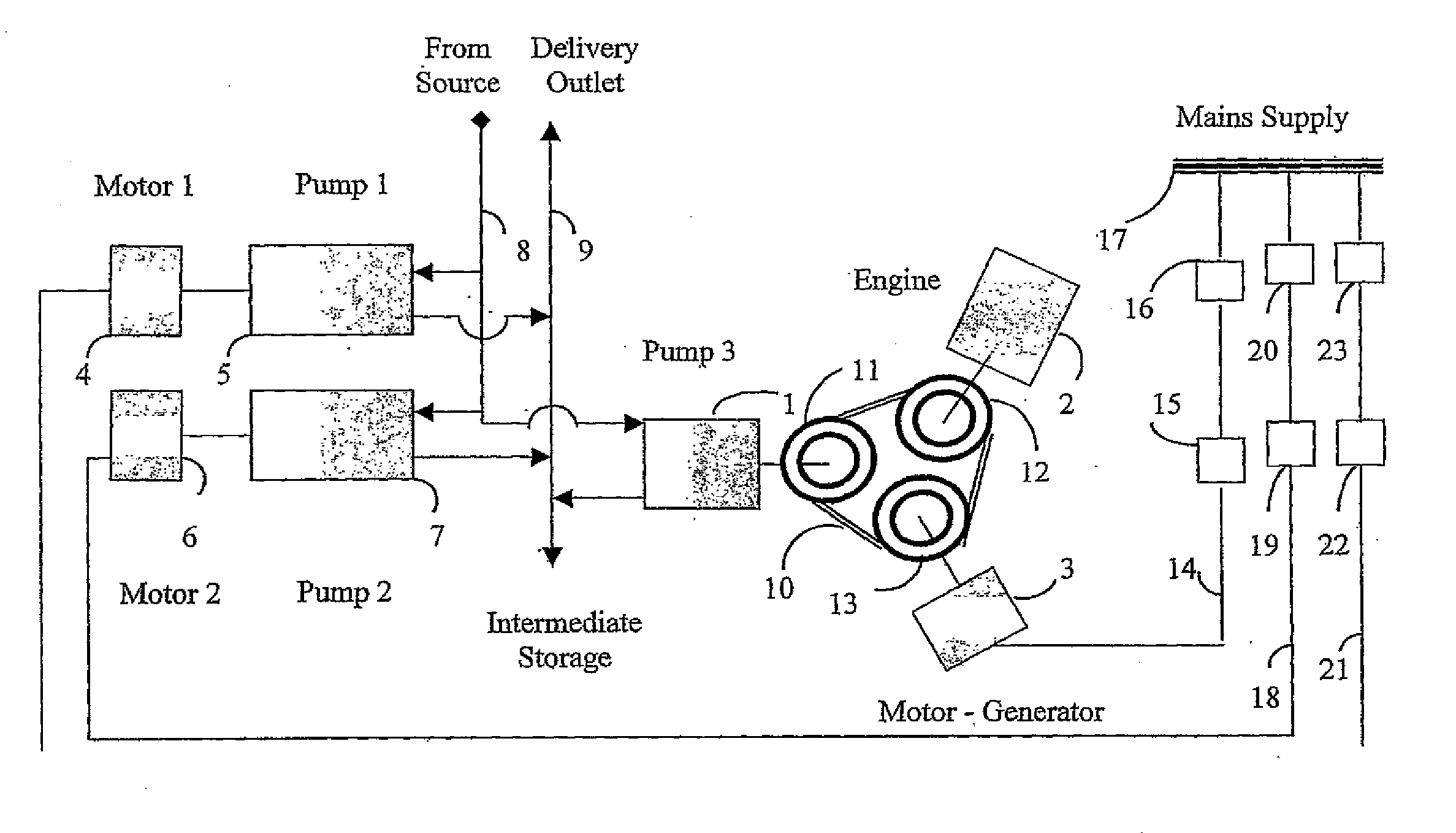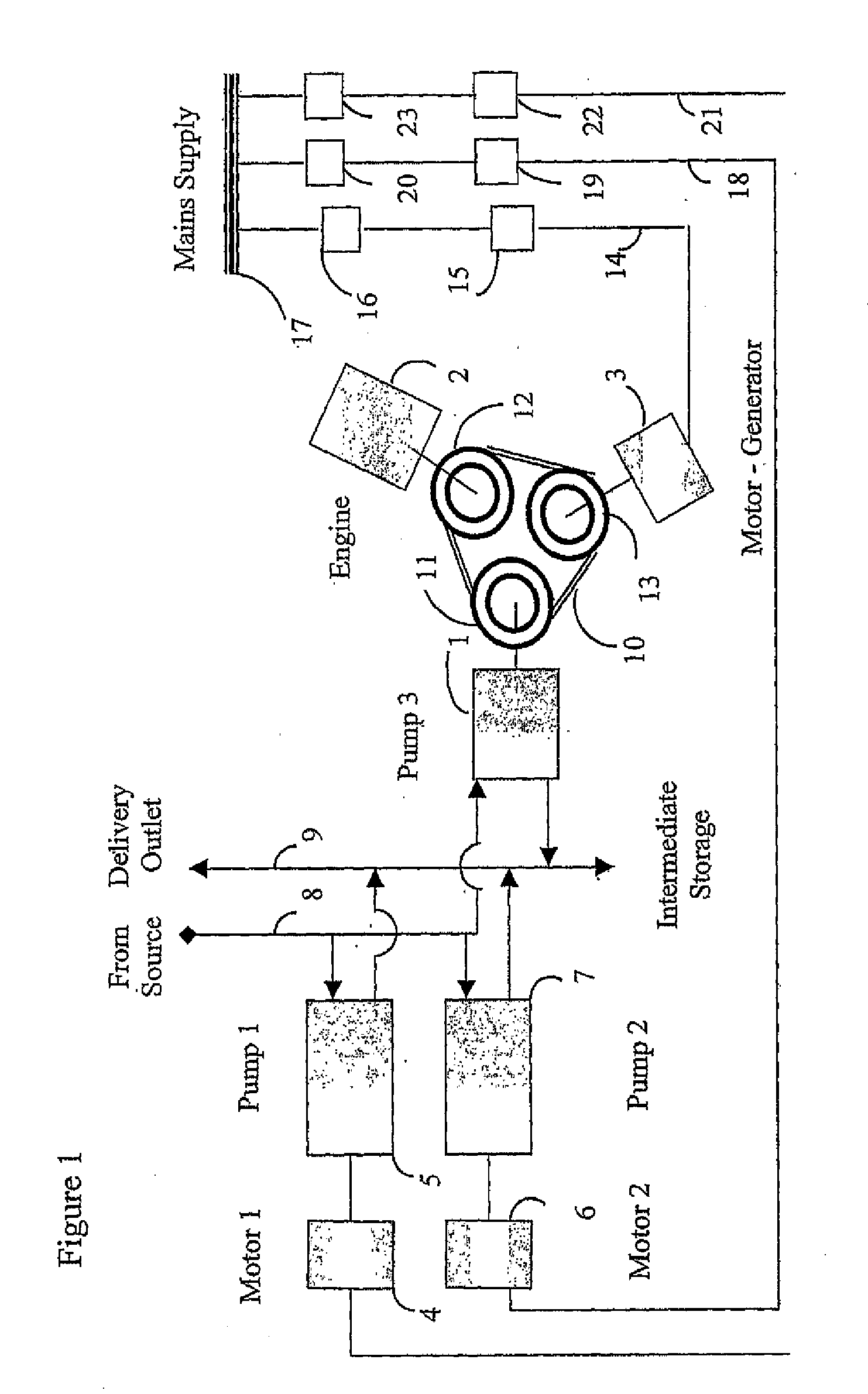Reducing the Cost of Distributed Electricity Generation Through Opportunity Generation
a technology of opportunity generation and distributed electricity, which is applied in the direction of ac network with energy trading/transmission rights, reactive power adjustment/elimination/compensation, electric power transfer ac network, etc. it can solve the problems of high fuel cost, short bursts of very high prices, and unnecessary expense of stand-by generating facilities. , to achieve the effect of increasing the cost of diesel and more economic outcomes
- Summary
- Abstract
- Description
- Claims
- Application Information
AI Technical Summary
Benefits of technology
Problems solved by technology
Method used
Image
Examples
Embodiment Construction
[0036]For purposes of clarity, the working of the invention is first described in its application to a simple embodiment of the invention in a high reliability environment such as a water pumping station, as depicted in FIG. 1. The normal design for such a pumping station would have three motor driven pumps, where two pumps would be needed to run in tandem to supply peak load but for most of the time operating one pump is sufficient to meet load requirements (a typical arrangement if there was no intermediate storage). A spare pump-set caters for a situation such as a breakdown of one pump or when one pump is down for routine maintenance. Motors 4,6 drive pumps 5,7 and are supplied electricity by means of the lines 21, 18 from the mains supply 17 via isolators 20,23 and starter units 19, 22
[0037]The electricity mains supply to the pump station would normally be sourced from two alternate feeders following different paths preferably originating from two distribution substations. Depe...
PUM
 Login to View More
Login to View More Abstract
Description
Claims
Application Information
 Login to View More
Login to View More - R&D
- Intellectual Property
- Life Sciences
- Materials
- Tech Scout
- Unparalleled Data Quality
- Higher Quality Content
- 60% Fewer Hallucinations
Browse by: Latest US Patents, China's latest patents, Technical Efficacy Thesaurus, Application Domain, Technology Topic, Popular Technical Reports.
© 2025 PatSnap. All rights reserved.Legal|Privacy policy|Modern Slavery Act Transparency Statement|Sitemap|About US| Contact US: help@patsnap.com



